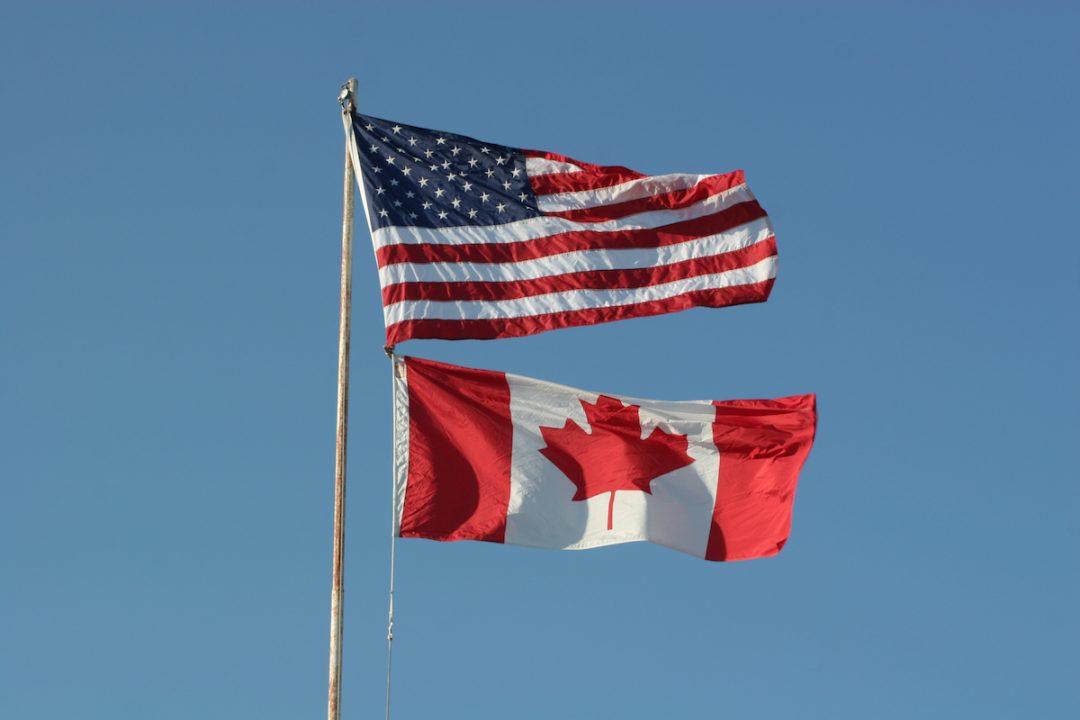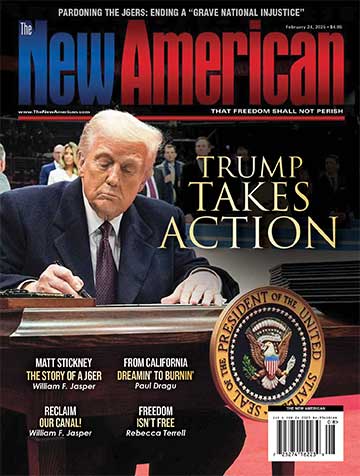
Rightist President Donald Trump and uber-left-wing Canadian Prime Minister Justin Trudeau don’t have much in common. But there’s one area where they’re wholly aligned.
They both agree that Trump is serious about making the Great White North the 51st state.
The president made his northern ambitions clear during a Super Bowl pre-show interview on Sunday. When asked by Fox News’ Bret Baier if his talk of absorbing Canada is “a real thing,” he answered “Yeah, it is.” Trudeau also said it was “a real thing” at a recent closed-door meeting with business and labor leaders. But would it be a wise thing?
Certainly, analysts say, it would benefit Canada economically, at least over the short term. And the U.S. would have access to the nation’s vast natural resources. There are political implications, too, however, because Canada is “rich” in another resource: left-wing voters.
Without question, making Canada the 51st state would pull the U.S. “left.” Moreover, making each of the country’s 10 provinces and three territories states — perhaps more likely under an annexation scenario — could make us Vermont with a Seattle chaser. Let’s break down the electoral realities and illuminate the topic.
Cold Political Truths
The probability of Canada being annexed is low, of course. Yet what it is not, historically, is “some crazy idea of Trump’s,” informs Armstrong Economics. The site continues:
The idea of merging the US with Canada has been around since the American Revolution. If we look at the Articles of Confederation back in 1777, there was even pre-approval for the admission of the Province of Quebec (previously known as Lower Canada) to the United States as they were anti-British.
Yet all of Canada now is pro-British-politics; that is, it reflects woke European statism. This is true even of most of its rural provinces. An analysis of the country’s most recent federal election (2021) bears this out.
Before proceeding, however, let’s become acquainted with the five Canadian political parties holding seats in the House of Commons (parliament):
- The Liberal Party (Lib) currently holds power (160 seats), is left-wing and represented by Trudeau.
- The Conservative Party (CPC) has the second-most seats (119).
- The New Democratic Party (NDP), founded in 1961, is described as generally to the left of the Liberals.
- The Bloc Québécois (BQ) seats are all in Quebec; the party is devoted to Quebec nationalism and sovereignty. To the point here, however, it’s described as “centre-left.” It has supported abortion, “LGBTQ+ rights,” euthanasia’s legalization, and lowering the voting age to 16, among other leftist positions.
- The Green Party (GP) rejects the left-right paradigm, but is a hard-left environmentalist entity. It holds only two parliamentary seats.
Bernie Sanders Paradise
Now let’s look at the power balance in each of Canada’s 10 provinces and three territories. (Note: The below doesn’t include the handful of vacant and independent seats.) According to OurCommons.ca, a Canadian government website, the realities are as follows:
- Ontario — the Liberals hold 75 seats. Combining the Libs with the NDP and GP (I’ll henceforth identify this trio as the “Left”) gives the Left 81. The CPC has 38.
- Alberta — Left, 4; CPC, 30.
- British Columbia — Left, 27; CPC, 14.
- Manitoba — Left, 7; CPC, 7.
- New Brunswick — Left, 6; CPC 4.
- Newfoundland and Labrador — Left, 6; CPC, 1.
- Northwest Territories — Left, 1; CPC, 0.
- Nova Scotia — Left, 7; CPC, 3.
- Nunavut — Left, 1; CPC, 0.
- Prince Edward Island — Left, 4; CPC, 0.
- Quebec — Left, 34; CPC, 9; BQ (also left-wing), 33.
- Saskatchewan — Left, 0; CPC, 14.
- Yukon — Left, 1; CPC, 0.
As you can see, the Left dominates in 10 provinces/territories, the Conservatives in only two: Alberta and Saskatchewan. It’s a tie in Manitoba.
Nationally, the Left holds 179 seats in Canada’s House of Commons, 212 when including the BQ. The Conservatives have only 120.
Canada’s parliament also has an Upper House, the Senate. Its members are appointed, not elected, by an official called the “governor general” (GG) on the advice of the prime minister, currently the hard-left Trudeau. Senators hold their seats until age 75, and the Senate appears a quite left-wing body.
State of Canada — and Insanity?
Having said the above, it is true that the Conservatives now lead in the polls. (The next federal election is in October.) So is Canada poised for a Trumpian revolution? Well, remember that what “conservative” means in a given context all depends on what you’re trying to conserve.
As I’ve explained in the past, the only consistent definitions of “liberal” and “conservative” relate, respectively, to a “desire to change the status quo” and a “desire to maintain the status quo.” So what will determine the positions held by liberals and conservatives? Answer: the political status quo — the ideological spectrum — in their time and place.
And Canada’s political spectrum is more like Europe’s than America’s. As website Policy Options Politiques (POP) reported in 2022, a
new survey from the Environics Institute confirms Canadian Conservatives have bigger differences with U.S. Republicans than Canadian Liberals [like RINOs?].
For example, most Canadian Conservatives, writes POP, believe “every woman who wants an abortion should be able to have one.”
The “New” America
So what would a U.S. with a state of Canada look like? Since Canada has almost exactly the same population as California, it would be like adding another California — without the nice weather. It would mean two more left-wing senators, such the Golden State’s Democrats Adam Schiff and Alex Padilla. It would mean approximately 52 more congressman, most of whom would be Democrats and the rest, mainly, RINOs. Using the current House makeup as the starting point, this would place the body firmly under Democratic control.
What, though, if each province/territory were its own state? The House of Representatives reality would be the same. Using the current House of Commons party makeup as a guide, however, it could mean 21 more Democratic senators and only five additional GOP ones. Of course, this would mean long-term Democratic Senate control — that is, until the Republicans moved sufficiently left to compete. In fact, the Dems might even have a veto-proof majority — in other words, enough to convict an impeached MAGA president.
This said, it’s quite unlikely Canada will become a state; 77 percent of Canadians are against it. But it isn’t surprising Trump would be Canada dreamin’ on a winter’s day: He’s a real-estate man by trade, after all. But bigger isn’t always better — especially when what’s grown is the army of the enemy within.



